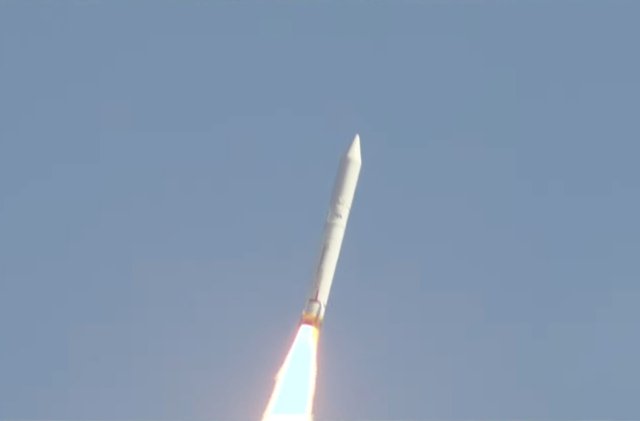Mr. Le Xuan Huy, Deputy General Director of Vietnam Space Center (VNSC), Vietnam Academy of Science and Technology, said that the unit’s engineers and experts continue to make efforts to search for signals.
`Currently, the ground station has not received information, so the detailed status parameters of the satellite cannot be determined. However, the VNSC ground station still has the mode to automatically receive signals when the satellite passes the station. One
Satellite not working?
`There are satellites that for unknown reasons, people receive signals after a while,` Mr. Huy said.
In case we cannot receive the signal of the NanoDragon satellite, we will still try to build the next satellites, thereby moving towards mastering satellite technology in the future.
NanoDragon satellite has 3 communication lines, including: Telemetry data line from the satellite transmitted to the ground in the UHF frequency band, control command line transmitted from the ground to the VHF frequency band and mission data transmission line from
NanoDragon and 8 other satellites participated in launching into space on November 9, 2021.
VNSC is operating twice a day at 9:30 am and 9:30 pm at the ground station in Hoa Lac Hi-Tech Park (Hanoi).
The center searches and screens all data related to NanoDragon signals on the Satnogs community, combines exchange and analysis of possible situations that may occur on satellites, and searches for solutions with partners.
`The process of manufacturing NanoDragon brings many valuable experiences and lessons to engineers and staff of the Center in all stages such as: design and manufacture, integration of testing, launch and preparation for operation.
Meanwhile, according to experts working in the field of space, usually as soon as it reaches the target, the satellite will send a signal, maybe 1-2 hours, or a few days.

From the above analysis, experts believe that the NaNoDragon satellite is likely not working, or having some problem.
Dream of mastering technology
NanoDragon was launched into space at 7:57 a.m. on November 9, 2021 with 8 other satellites thanks to Epsilon No. 5 rocket. RAISE-2 was the first satellite released.
`The path to conquering space still has many difficulties and challenges, but the important thing is that we are all always ready to face it and make efforts to achieve the common dream: The dream of mastering technology,` said Mr. Huy.
Previously, the PicoDragon micro satellite (with a mass of 1kg) researched and manufactured by the Vietnam Space Center was also launched in 2013. The satellite operated quite stably for about 3 months, continuously transmitting signals.
After the success of PicoDragon with the goal of gradually mastering satellite manufacturing technology, VNSC engineers developed the idea of developing a more complex satellite, performing more practical tasks.
During the launch preparation process, the NanoDragon satellite passed 4 rounds of JAXA launch safety testing with many strict standards and important environmental tests such as: 82-hour vacuum thermal environment tests,
In a response to the press, an engineer from the Vietnam Space Center said that the entire frame design is processed in Vietnam. Due to the high cost, many units refuse to buy foreign money.
NanoDragon is a nano-class cubesat satellite, weighing 3.8kg with standard dimensions of 3U (100x100x340.5mm).
The satellite’s name is NanoDragon, meaning the Vietnamese little dragon will fly high and far into space.
In 2019, the MicroDragon satellite was successfully launched into orbit and is still operating according to its set goals.

